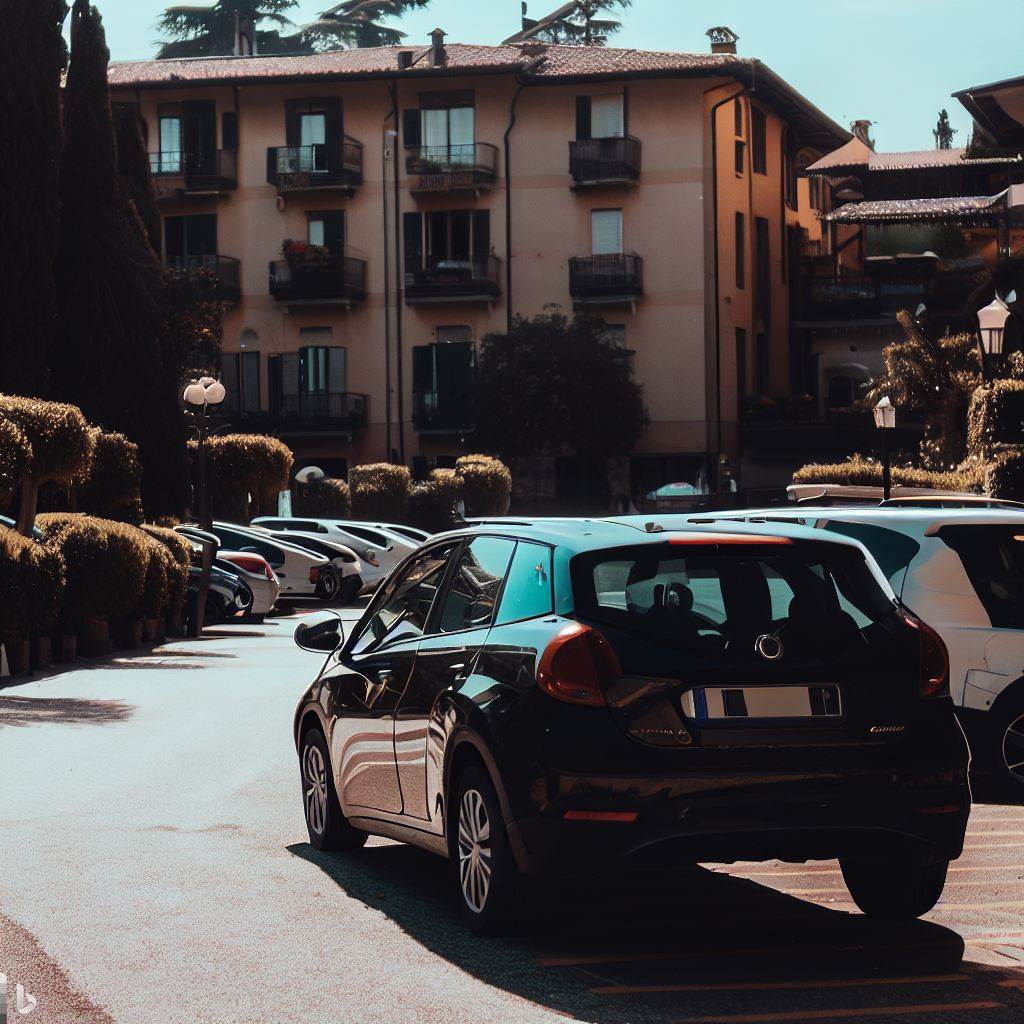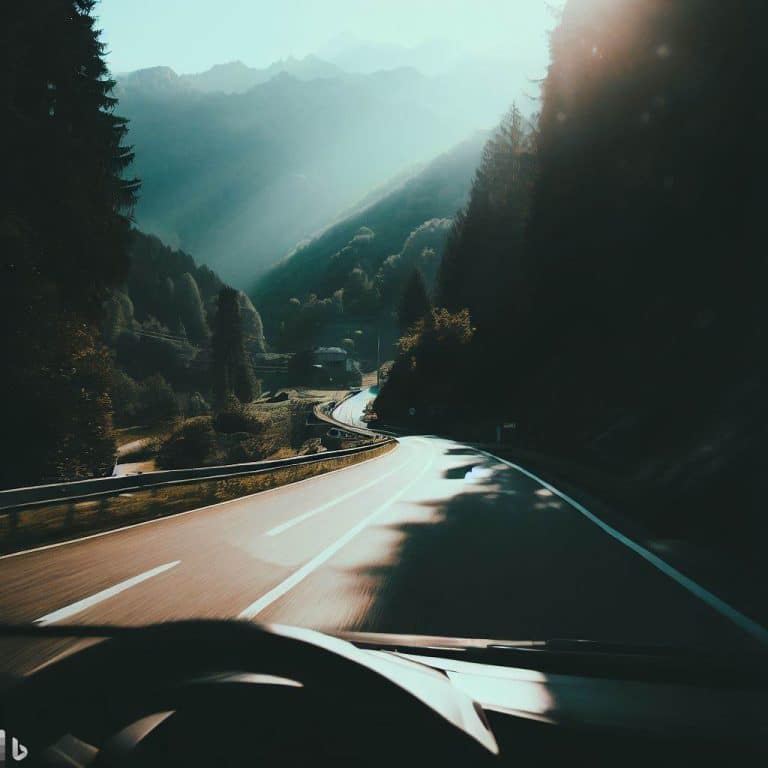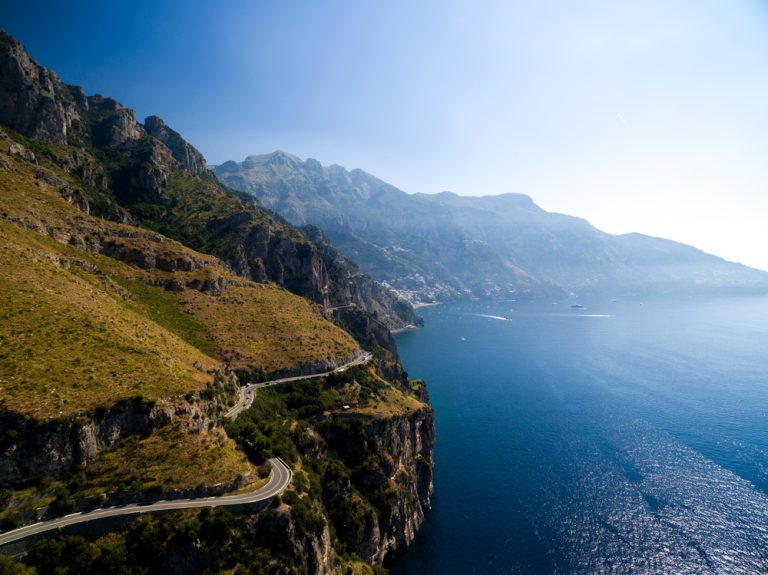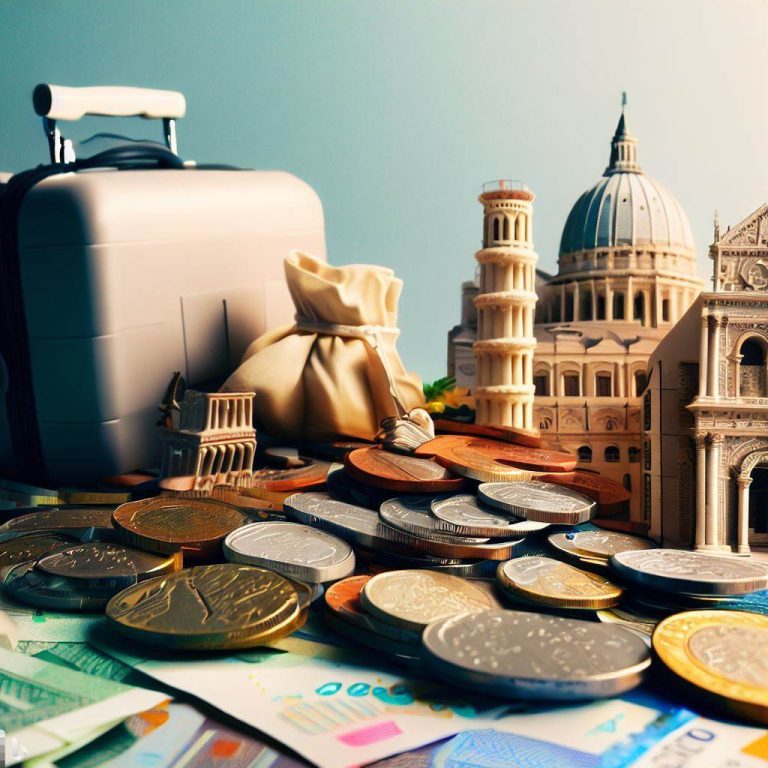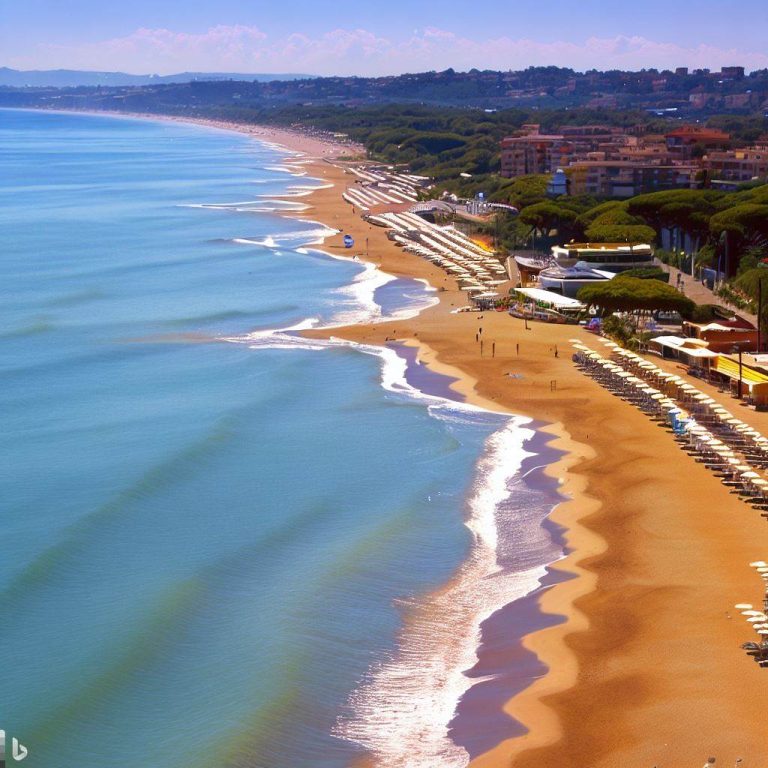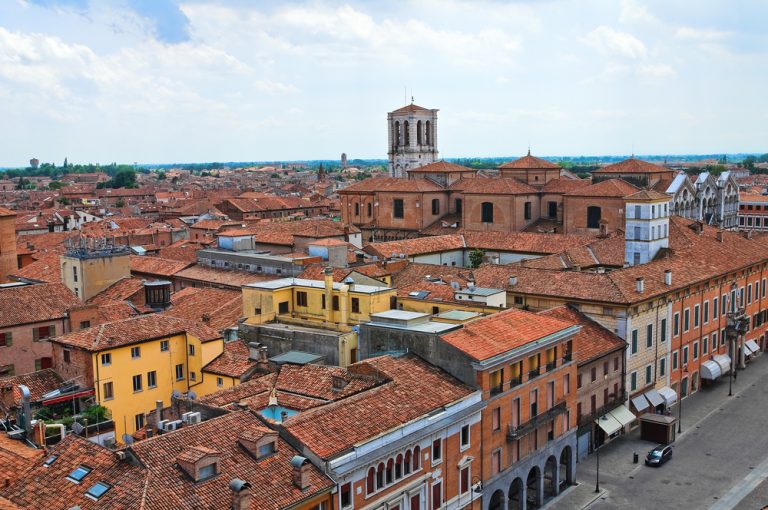The Reality of Parking in Italy: What Every Driver Should Know
Hey there, fellow traveler! It’s Erik here. Ready to embark on an Italian adventure? You’ve come to the right place.
Italy, the land of mouth-watering pizza, enchanting landscapes, and awe-inspiring history, offers a vibrant experience that leaves tourists spellbound. Whether it’s the charm of ancient Rome, the artistic allure of Florence, or the captivating canals of Venice, there’s no denying Italy’s magnetism.
But as anyone who’s tried to navigate a car through Italy’s bustling streets will tell you, there’s one thing that can put a damper on your dolce vita: parking. Yes, you heard it right. Italian parking is a unique entity in and of itself, often seeming like a puzzle to first-time visitors.
The narrow cobblestone streets, the high demand for parking, and the seemingly cryptic signage can make parking feel like deciphering an ancient script. Not to mention the dreaded ZTL zones that can catch unsuspecting tourists off guard, resulting in unwelcome fines.
But don’t fret! I’ve created this comprehensive guide to help you understand the ins and outs of parking in Italy, saving you time, money, and unnecessary stress. Let’s dive in and unravel this parking enigma together, so you can focus on what truly matters – enjoying your fabulous Italian vacation.
Stay tuned, fellow explorers, and let’s transform the daunting task of parking in Italy into just another part of the adventure.
Why Parking Can Be Challenging in Italy
So, you’re ready to brave the adventure that is parking in Italy. Great! First, let’s understand what makes it a bit challenging.
Italy’s cities, with their rich history and heritage, were not designed with the modern automobile in mind. The narrow, winding streets in older parts of towns and cities can feel like a maze, especially for visitors used to wide, grid-based city layouts. This can make navigating, let alone parking, quite an experience.
The busy nature of most Italian cities adds to the challenge. Italians love their cars and scooters, and you’ll see them zipping around at all hours of the day. This high demand for parking, especially in city centers and popular tourist sites, can make finding that perfect parking spot feel like searching for a needle in a haystack.
Then, there are the differences in rules and regulations. If you’re visiting from abroad, you’ll find that parking regulations in Italy may be quite different from what you’re used to. Color-coded parking zones, limited traffic areas (ZTLs), and unique signages can create confusion, often leading to unexpected parking tickets.
But don’t worry! That’s why we’re here. As you navigate your Italian journey, remember that every experience, even parking, contributes to your overall adventure. In the following sections, we’ll demystify Italian parking signs, explain the specifics of paid and free parking, and share some tips to help you steer clear of parking fines.
Understanding Italian Parking Signs and Symbols
Diving into the world of Italian parking, it can initially feel like you’ve landed in a foreign film without subtitles. Don’t panic! Here’s your cheat-sheet to decode Italian parking signs and symbols.
First, you should know that Italy uses a color-coded system for parking. Once you understand this, the task of finding a parking spot becomes less of a hurdle. Let’s break it down:
- Blue Lines: If you spot these on the road, rejoice! You’ve found a paid parking spot. Pay at the nearby parking meter, display the ticket on your dashboard, and you’re good to go. The amount varies from city to city and sometimes, even within different areas of the same city.
- White Lines: These are the unicorns of Italian parking, symbolizing free parking. However, do check for additional signs – sometimes these spots are reserved for residents or are free only at certain times.
- Yellow Lines: This is a no-go zone. Yellow lines indicate parking reserved for special vehicles, disabled drivers, or loading and unloading.
Now, onto the road signs. You’ll want to familiarize yourself with two key signs:
- No Parking/No Waiting signs: A blue sign with a red border and a cross over a black car symbol means you cannot park there. If there’s a black and white ‘hour bar’ underneath, it means the rule applies during the specified hours.
- ZTL Signs: Limited Traffic Zone (Zona Traffico Limitato) signs are crucial to look out for. Entering these zones without a permit can result in hefty fines.
By familiarizing yourself with these basics, you’re already a step ahead in your Italian parking journey.
Paid Parking in Italy
Now that we’ve covered the basics of parking signs, let’s delve into the specifics of paid parking in Italy. Remember those blue lines we talked about? Well, finding them is only half the battle. Here’s how to tackle the rest:
Parking Meters and Tickets
Most paid parking spots use parking meters, known as “parcometri” in Italian. After parking your car, look for the nearest parcometer, which is typically a small electronic machine nearby.
The process is usually straightforward: enter your car’s registration number, select the amount of time you wish to park, and make the payment. The machine will then issue a ticket, which you should clearly display on your car’s dashboard to avoid fines.
Payment Methods
Parking meters usually accept coins, but in some larger cities, they might also accept cards. However, to be on the safe side, I recommend always keeping some spare change handy for parking.
Parking Rates
The cost of parking can vary widely depending on the city and the location within the city. Generally, expect to pay more for parking in the city center or near popular tourist destinations. Some areas also have variable pricing based on the time of day, with higher rates during peak hours.
Getting a handle on paid parking might take a bit of practice, but don’t worry! You’re well on your way to becoming an Italian parking pro.
Free Parking in Italy
Free parking in Italy—sounds like a dream, right? While not as common as paid parking, free parking spots do exist, especially if you’re willing to park a bit further away from city centers or popular tourist sites.
Here’s what you need to know:
Finding Free Parking
Free parking spots are marked by white lines. However, finding them, especially in larger cities or near popular destinations, might require some luck or insider knowledge. Consider asking your hotel staff or local residents for tips on where to find free parking.
Rules for Free Parking
While parking in these white-lined spots is generally free, always look for additional signs. In some cases, these spaces may be reserved for local residents, or free parking may be limited to certain hours.
Ensuring the Area is Free
This point can’t be stressed enough: before you leave your car in a free parking spot, make sure it’s indeed free. Look for signs indicating time restrictions or residential permits. The last thing you want is to come back to a parking ticket on your windshield.
Remember, when it comes to free parking in Italy, a little extra caution can save you from unexpected fines.
Parking in Major Italian Cities
Now that we have the basics down, let’s zoom into specific tips for parking in some of Italy’s most popular destinations: Rome, Florence, Venice, Milan, and Naples.
1. Parking in Rome:
Rome, the Eternal City, is teeming with history, culture, and, yes, cars. Consider using the city’s peripheral parking lots and taking public transport or walking to the city center. It’s cheaper and saves you the hassle of navigating Rome’s bustling traffic and ZTLs.
2. Parking in Florence:
Like Rome, Florence has a series of ZTLs. Parking in the city center can be quite pricey. A handy tip is to use the “Park and Ride” facilities on the outskirts of the city and use public transportation to reach the city center.
3. Parking in Venice:
Driving in Venice can be tricky considering the city is famous for its canals, not its roads! Your best bet is to park in one of the large garages in Mestre or at the Tronchetto parking island, then use water buses to explore the city.
4. Parking in Milan:
In Milan, you’ll find several parking garages around the city. However, these can be quite expensive. As an alternative, consider parking further out and using Milan’s excellent public transport system.
5. Parking in Naples:
Naples is known for its chaotic traffic and narrow streets, which can be daunting for visitors. Utilize guarded parking lots for peace of mind and hop on public transport to explore this vibrant city.
Remember, each city has its quirks and characteristics. Doing a bit of city-specific research can go a long way in ensuring a smooth parking experience.
6. Parking in Turin:
In Turin, the city center has numerous paid parking lots and garages. However, these can be expensive. You may find more affordable or even free parking in the suburbs, then take public transit into the city.
7. Parking in Bologna:
Bologna’s historic city center is largely a ZTL, so parking can be a challenge. Consider using the city’s several “Park and Ride” services on the outskirts, then take a bus to the city center.
8. Parking in Verona:
Verona has several paid parking facilities around the city. The closer you get to the historic center, the pricier it can be. A smart strategy is to park on the outskirts and use public transport.
9. Parking in Palermo:
Palermo, known for its narrow, winding streets, can be challenging for parking. Use one of the city’s guarded parking lots for peace of mind, and then use public transport or walk.
10. Parking in Genoa:
In Genoa, you’ll find a mixture of free and paid parking spots. Many are on the outskirts of the city, where you can leave your car and use public transport to travel into the city center.
11. Parking in Siena:
In Siena, most of the city center is a pedestrian zone, so your best bet is to use one of the several paid parking lots outside the walls and then walk or take a bus.
12. Parking in Pisa:
In Pisa, consider leaving your car at one of the city’s peripheral parking lots, then use public transportation to get to the city center. Parking closer to the Leaning Tower can be quite expensive.
13. Parking in Lucca:
For Lucca, parking outside the city walls is the best option. There are several parking lots around the perimeter, and you can easily walk or cycle from there into the city center.
14. Parking in Bari:
Parking in Bari can be difficult, especially in the old town, where streets are narrow. Consider parking in a guarded lot and using public transportation or walking to explore the city.
15. Parking in Cagliari:
In Cagliari, parking on the street is generally free or relatively cheap. However, during the summer, parking near the popular Poetto Beach can be challenging, so arrive early.
Dealing with Parking Fines in Italy
Let’s talk about the elephant in the room: parking fines. Despite your best efforts, it’s possible to slip up and find yourself faced with a multa (fine). Here’s what you should know.
Avoiding Fines
The best way to avoid fines is, of course, to park correctly. Stay vigilant about parking signs, especially in ZTL zones. If you’re unsure about a parking spot, it’s better to find an alternative than risk a fine.
Paying Fines
If you do get a ticket, don’t despair. Paying parking fines in Italy is usually a straightforward process. The ticket will have instructions (usually in multiple languages, including English) on how and where to pay the fine. You can often pay online, at a post office, or at a local police station.
Disputing Fines
If you believe you received a fine in error, you can contest it. This process is more complex and will likely require the help of an Italian speaker. If you’re renting a car, contact your rental company as soon as possible. They can provide guidance and may be able to assist with the dispute process.
While nobody likes getting a parking ticket, remember that it’s not the end of the world. Stay informed, be proactive, and don’t let a minor hiccup ruin your Italian adventure.
While navigating the parking scene in Italy, knowing some common Italian phrases related to parking can be a real asset. Here are some that may come in handy:
- Parking/Parking lot – Parcheggio
- Street Parking – Parcheggio su strada
- Parking Meter – Parcometro
- Parking Ticket – Multa per parcheggio
- Free Parking – Parcheggio gratuito
- Paid Parking – Parcheggio a pagamento
- Disabled Parking – Parcheggio per disabili
- No Parking – Divieto di parcheggio
- I am looking for a parking spot – Sto cercando un posto per parcheggiare
- Where can I park for free? – Dove posso parcheggiare gratuitamente?
- Is this parking free? – È gratuito questo parcheggio?
- How much does it cost to park here? – Quanto costa parcheggiare qui?
- Where is the parking meter? – Dove si trova il parcometro?
- Can I park here overnight? – Posso parcheggiare qui per la notte?
- Limited Traffic Zone (ZTL) – Zona a Traffico Limitato (ZTL)
Try practicing these phrases before your trip. Not only will it help you with parking, but locals will appreciate your efforts to speak their language. Plus, knowing the local language can add a whole new dimension to your travel experience.
Useful Resources for Driving and Parking in Italy
Having a list of resources at your fingertips can prove invaluable during your Italian road trip. Here are some useful links and phone numbers:
1. Italian Automobile Club (ACI)
The ACI provides roadside assistance, as well as travel information and other useful services. Their emergency number is 116. Website: https://www.aci.it
2. Italian Traffic Authority
For information about driving regulations in Italy. Website: http://www.aci.it/laci/driving-in-italy/driving-in-italy.html
3. Italian Police
For emergencies, dial 113.
4. Car Parks in Italy
For details about parking facilities across Italy, refer to these websites:
5. Information about ZTL Zones
To check on ZTL zones in various Italian cities:
6. Public Transport
For information about public transport services in Italy:
- Train: Trenitalia http://www.trenitalia.com
- Bus: FlixBus https://www.flixbus.com
7. Online Maps and Directions
Useful for navigation and finding parking spots:
- Google Maps http://maps.google.com
- Waze https://www.waze.com
8. Translator Apps
Helpful in translating parking signs and more:
- Google Translate https://translate.google.com
- Duolingo https://www.duolingo.com
Remember, it’s always a good idea to bookmark these resources or save them in an easily accessible location in your mobile device. That way, they’re handy when you need them.
Renting a Car in Italy: Insider Tips You Need to Know
Embarking on the Italian journey of a lifetime? It just might involve renting a car. Picture yourself cruising through rolling vineyards, historic towns, and along picturesque coastlines. But before you hit the road, let’s buckle up and run through some essential tips for renting a car in Italy.
1. Have the Right Paperwork
Nothing puts the brakes on a road trip like not having the right documents. Ensure you have a valid driver’s license accepted in Italy, preferably an International Driving Permit (IDP) for non-EU residents. Don’t skimp on insurance either. Check what the rental company covers and ponder extra protection if needed.
2. Choosing Your Ride
In Italy, manual cars rule the road. If you’re more at ease with an automatic, remember to specify this when you book. You might need to dig a bit deeper into your pocket, as automatics can be pricier and less abundant.
3. Age Does Matter
Rental companies typically require drivers to be at least 21. Under 25? Expect a young driver fee. There’s often an upper age limit too, usually around 75.
4. Credit Card Holds
Renting a car often means a hold on your credit card for a deposit. So, make sure you have enough available credit for this, plus all those fabulous Italian meals, of course!
5. ZTL Zones and You
Beware of the dreaded ZTL zones! These are Limited Traffic Zones where only locals or authorized vehicles dare to tread. Accidentally venturing into a ZTL can result in an unwelcome souvenir – a hefty fine.
6. Extra, Extra!
Thoroughly peruse your rental contract. You might discover extra charges for additional drivers, GPS units, child seats, or that stylish Italian scarf you always wanted. Okay, maybe not the scarf, but you get the picture!
7. Fuel Up!
Know your rental company’s fuel policy. Some want a full tank on return, while others let you return it empty but charge a premium for refueling.
8. Check Before You Rev
Before you leave the rental lot, check the car for any damage. Make sure it’s noted on your rental agreement. You don’t want to end up footing the bill for someone else’s scrape with a narrow Italian street!
Renting a car can turn your Italian dream into a reality, providing the freedom to roam at your own pace. But remember, as in all good Italian operas, understanding the plot and knowing the key characters (in this case, the rental agreement and rules) can save you from any unexpected drama!
Conclusion and Key Takeaways
Alright, friends, we’ve arrived at the end of our journey into the world of parking in Italy. And you know what? You’ve navigated it like a pro.
We’ve covered everything from the color-coded parking system, to city-specific advice, and even handling parking fines. Now you’re equipped with the knowledge to tackle parking in Italy with confidence.
To wrap things up, let’s highlight some key takeaways:
- Understand the Basics: Remember the color codes: Blue for paid parking, white for free, and yellow for special use. Familiarize yourself with common signs like the ‘No Parking’ and ‘ZTL’ signs.
- Paid Parking: Use parcometri for paid parking spots. Keep coins handy for payment, display your parking ticket on the dashboard.
- Free Parking: They’re rare but exist. White lines mark free parking, but double-check for additional signs indicating restrictions.
- City-Specific Info: Each city has its quirks. Do some research beforehand about parking in the city you’re visiting. When in doubt, consider parking in peripheral lots and using public transportation.
- Parking Fines: Avoid fines by parking correctly and being mindful of regulations. If you do get fined, follow the instructions on the ticket to make the payment or contest the fine if necessary.
Remember, a bit of preparation can go a long way in ensuring a smooth, stress-free Italian vacation. And at the end of the day, parking, like any other aspect of your journey, is part of the adventure.
Safe travels, and as the Italians say, “Buon viaggio!”

